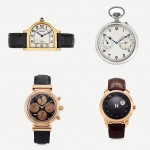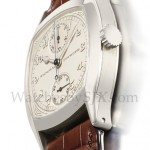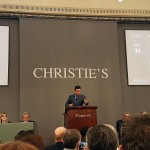Highlights: The Notable and Interesting at Christie’s Dubai Online Auction
From a royal Royal Oak to a luxe Patek Philippe lighter.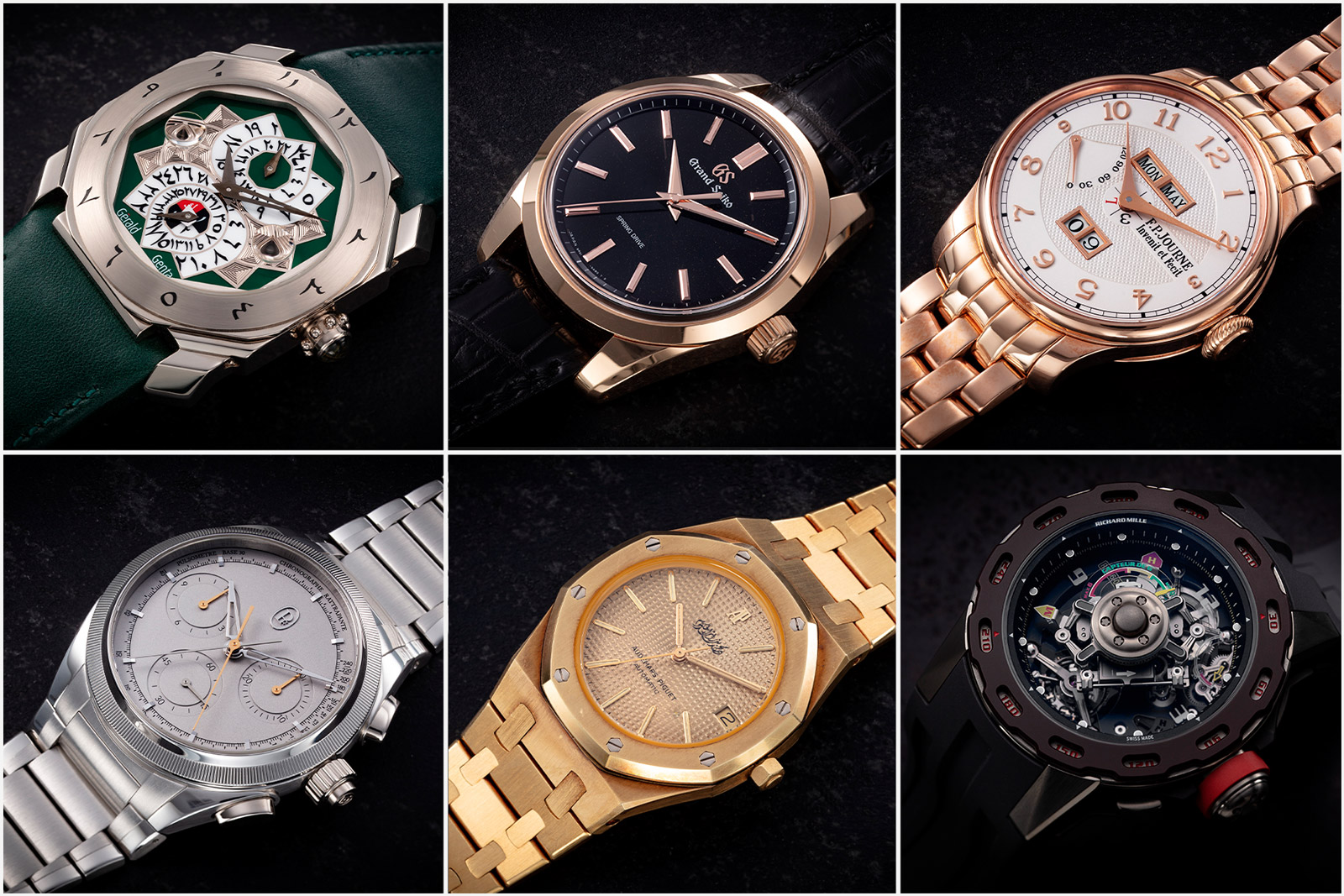
Christie’s kicks off the spring auction season with Watches Online: The Dubai Edit, a 136-lot sale taking place entirely online. Featuring a diverse selection of watches, the sale by big-ticket items like a Richard Mille RM 69 tourbillon and a Patek Philippe Nautilus ref. 5711/111P with a sapphire-set bezel.
But the sale also encompasses some unusual and interesting timepieces that are worth a second look, including the Richard Mille RM 36-01 with a G-force sensor and a Grand Seiko 8-Days produced by the same workshop responsible for the better-known Credor Eichi.
Some lots are uniquely reflective of the Middle East: amongst them is the Gerald Genta Octo Mosaic with a perpetual calendar in Eastern-Arabic script and a Patek Philippe Golden Ellipse gentleman’s set of a solid-gold lighter and cufflinks enamelled with the flag of Oman.
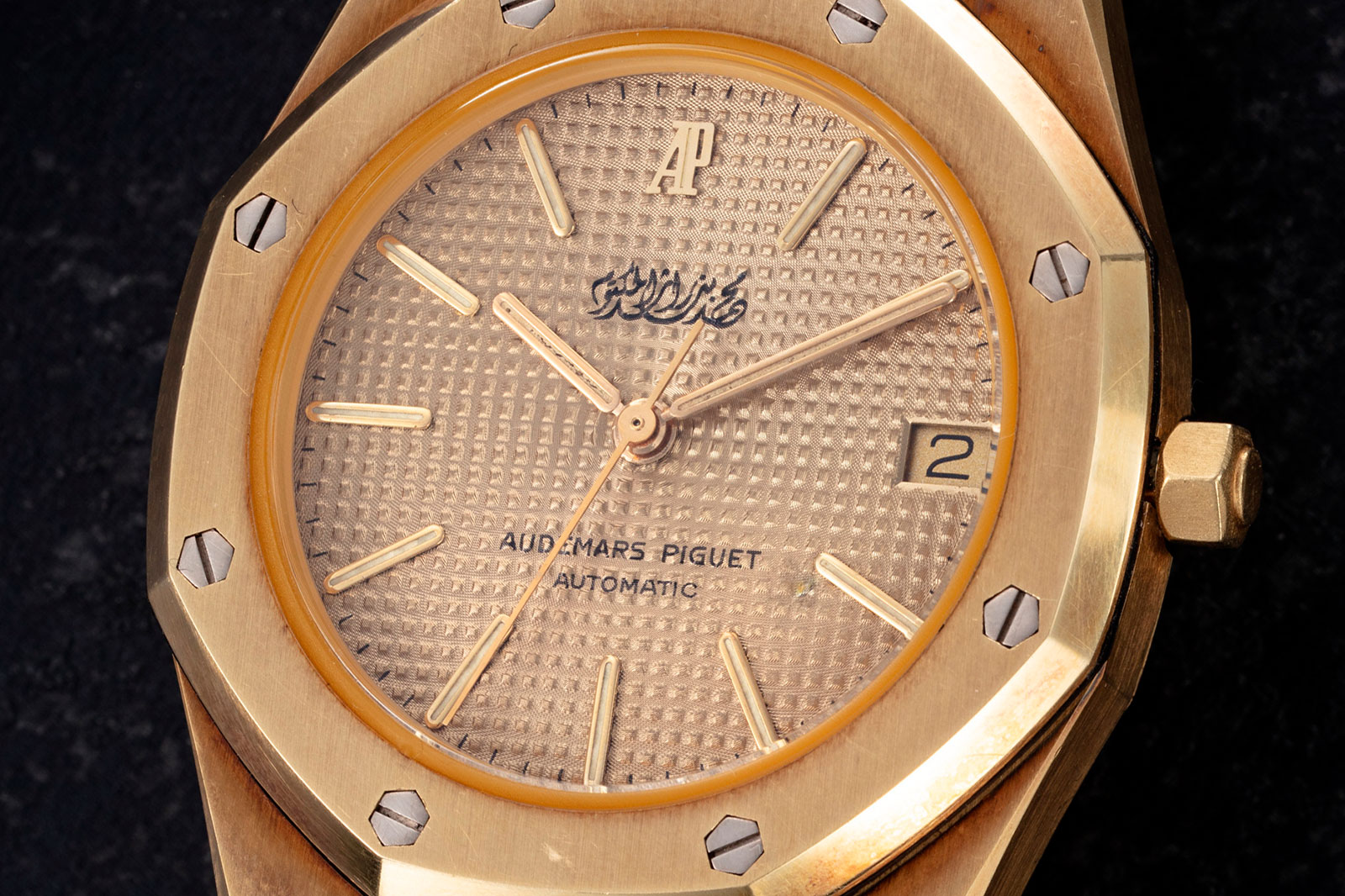
A Royal Oak with the signature of Sheikh Mohammed of Dubai under 12 o’clock where the brand name typically is
Watches Online: The Dubai Edit takes place online from April 24 to May 4. All the watches will be on show at the same time in the preview exhibition in the Dubai International Financial Centre (DIFC). Registration for bidding and the catalogue can be found on Christies.com.
Lot 1: Audemars Piguet Royal Oak ref. 4100BA “Sheikh Mohammed”
One of the sale’s headline lots is an Audemars Piguet Royal Oak ref. 4100BA that, from a distance, looks like an ordinary mid-sized version of the emblematic sports watch. But up close this example reveals itself to be different: replacing the brand name under 12 o’clock is the signature of Sheikh Mohammed bin Rashid Al Maktoum, the present ruler of Dubai.
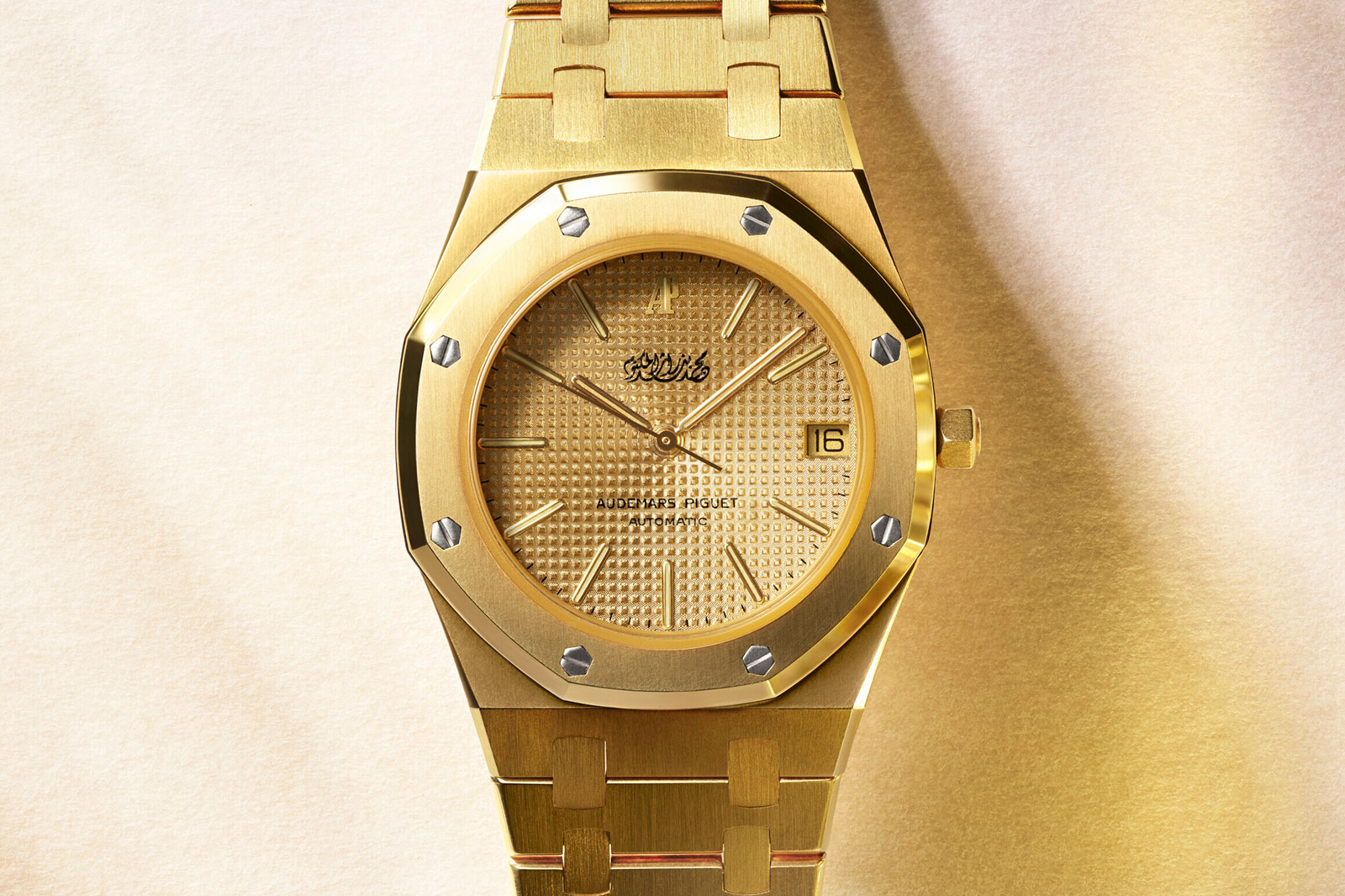
Watches bearing the emblems of Middle Eastern states or rulers can be found regularly enough at auction, particularly those by Rolex. Such watches are typically gifts from the states or rules to notable personalities, a common practice in the region. This Royal Oak, however, is unusual simply because it is a Royal Oak as the model is less often found with emblems or signatures.
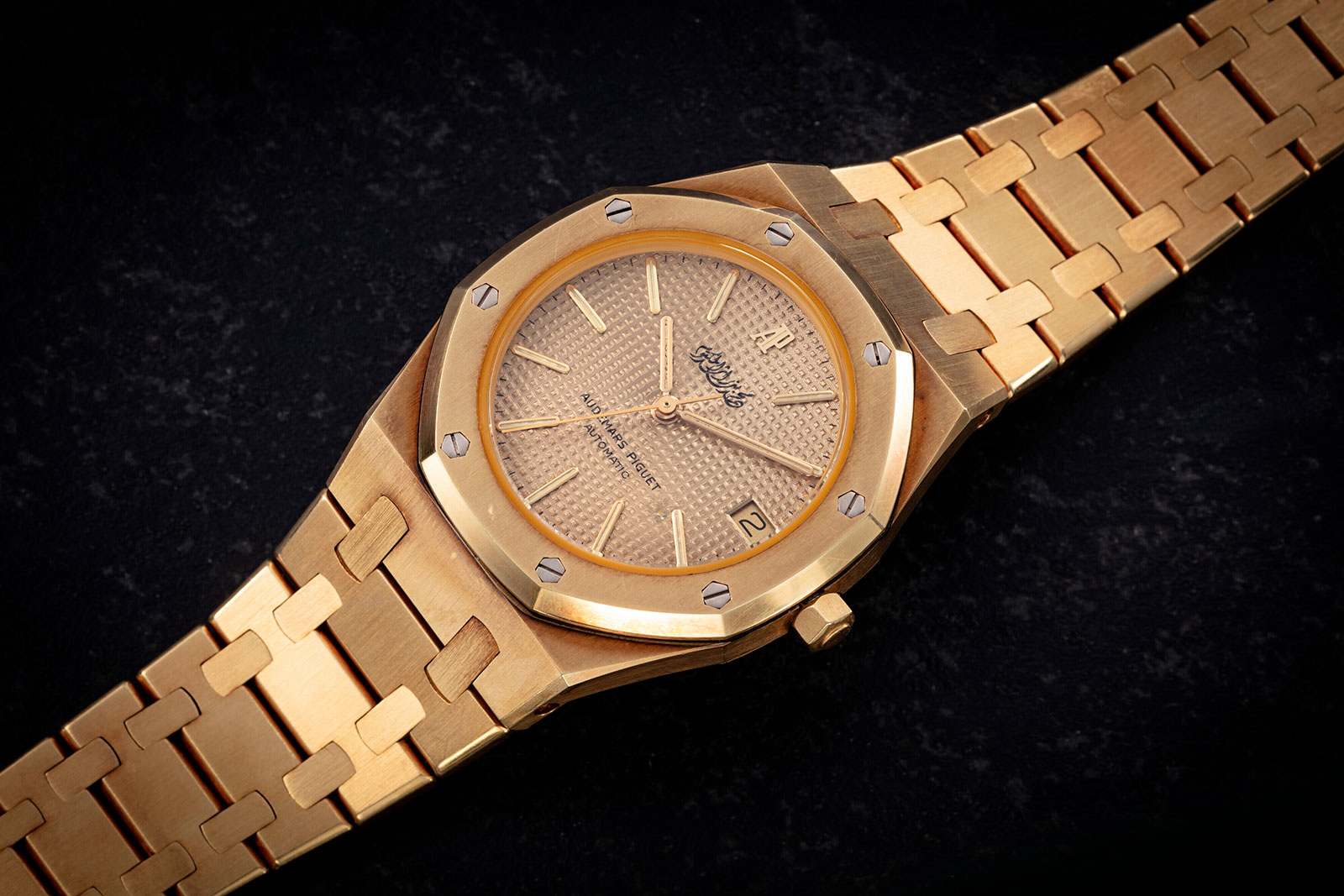
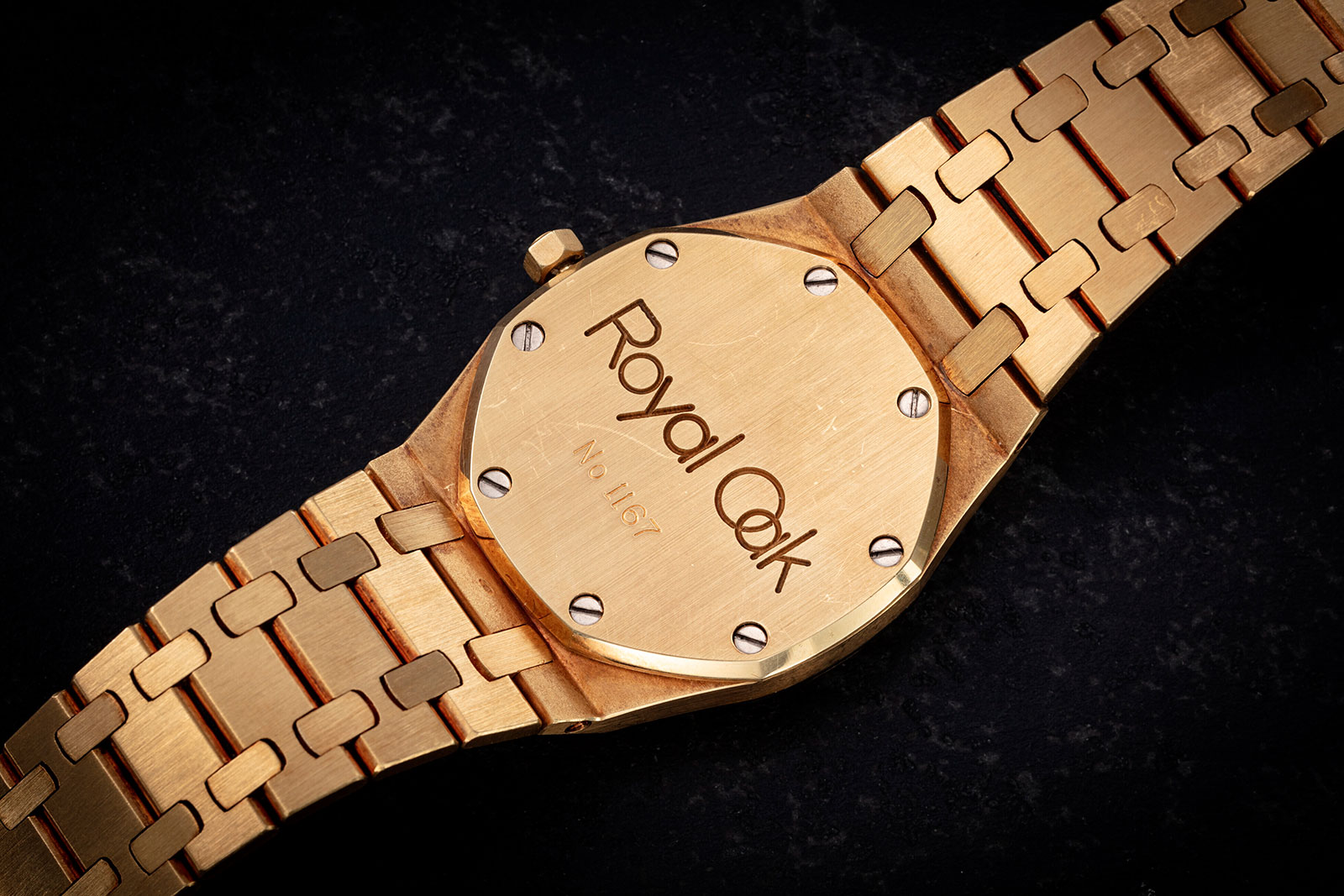
According to AP, this watch was delivered to Ahmed Seddiqi & Sons, the biggest watch retailer in Dubai, in 1980 when Sheikh Mohammed was the Minister of Defence of the United Arab Emirates, a post he still holds.
Accompanied by an archive extract, this watch is presented in crisp condition with the case having a patina typical of aged yellow gold. It has an estimate of US$30,000-50,000. You can find out more in the catalogue.
Lot 6: F.P. Journe Quantième Perpétuel with bracelet
Introduced in 2013, the Quantième Perpétuel was F.P. Journe’s second watch with the complication but definitely the most legible of its calendar watches thanks to the good-sized windows on the dial. It is powered by the cal. 1300.3, a variant of F.P. Journe’s signature Octa calibre that features a clever perpetual calendar mechanism that can be adjusted almost entirely via the crown, save for the month display that’s advanced via a corrector hidden under the lug.
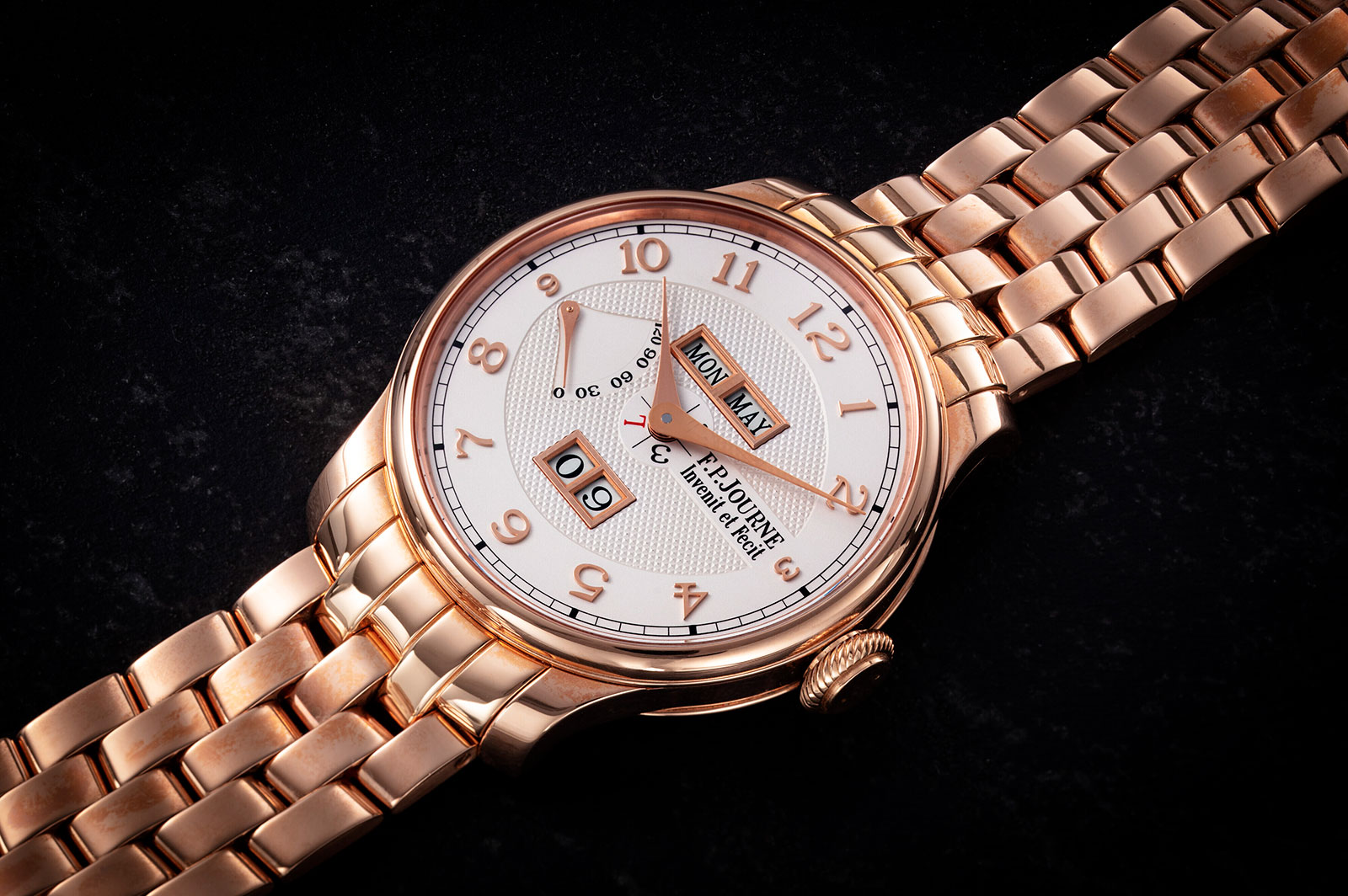
This example is the face-lifted version featuring a guilloche dial that was launched in 2016. The calendar windows also gained an applied frame during the facelift, emphasising their central function.
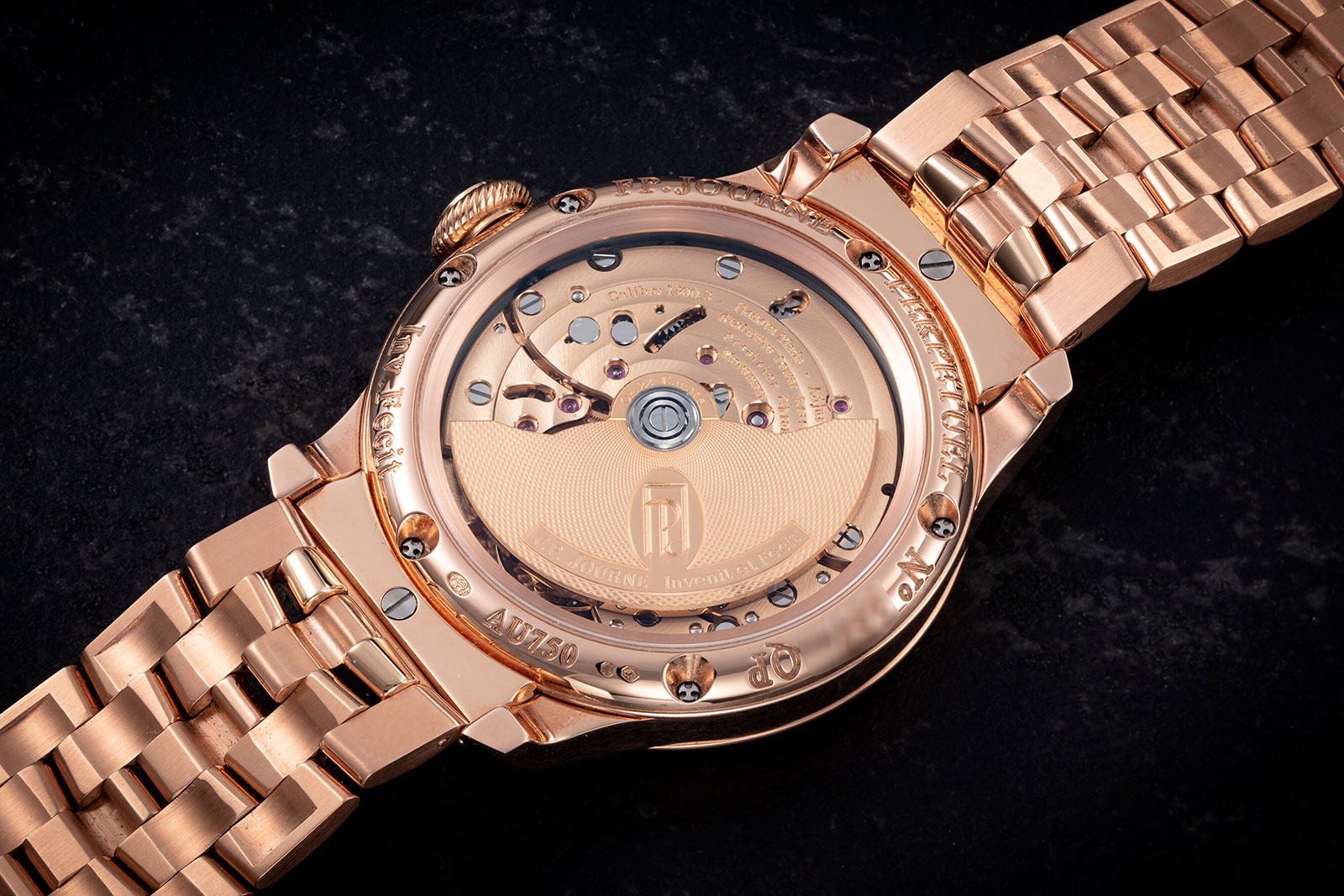
Notably, this watch has a 40 mm case, the smaller – and arguably much more wearable – of the two case sizes available, with the larger size being a chunky 42 mm. And perhaps more importantly, this is fitted to a matching, solid-gold bracelet, an uncommon option simply due to its cost.
This watch is complete with its box and guarantee card. It carries an estimate of US$120,000-220,000. For more, visit the catalogue.
Lot 14: Richard Mille RM 36-01 “Sebastien Loeb”
One of the most complicated timepieces in the sale is the Richard Mille RM36-01. Originally devised for French rally driver Sebastien Loeb, a nine-time winner of the World Rally Championship (WRC), the RM 36-01 is unconventional for a Richard Mille because it has a round case instead of the brand’s trademark tonneau form.
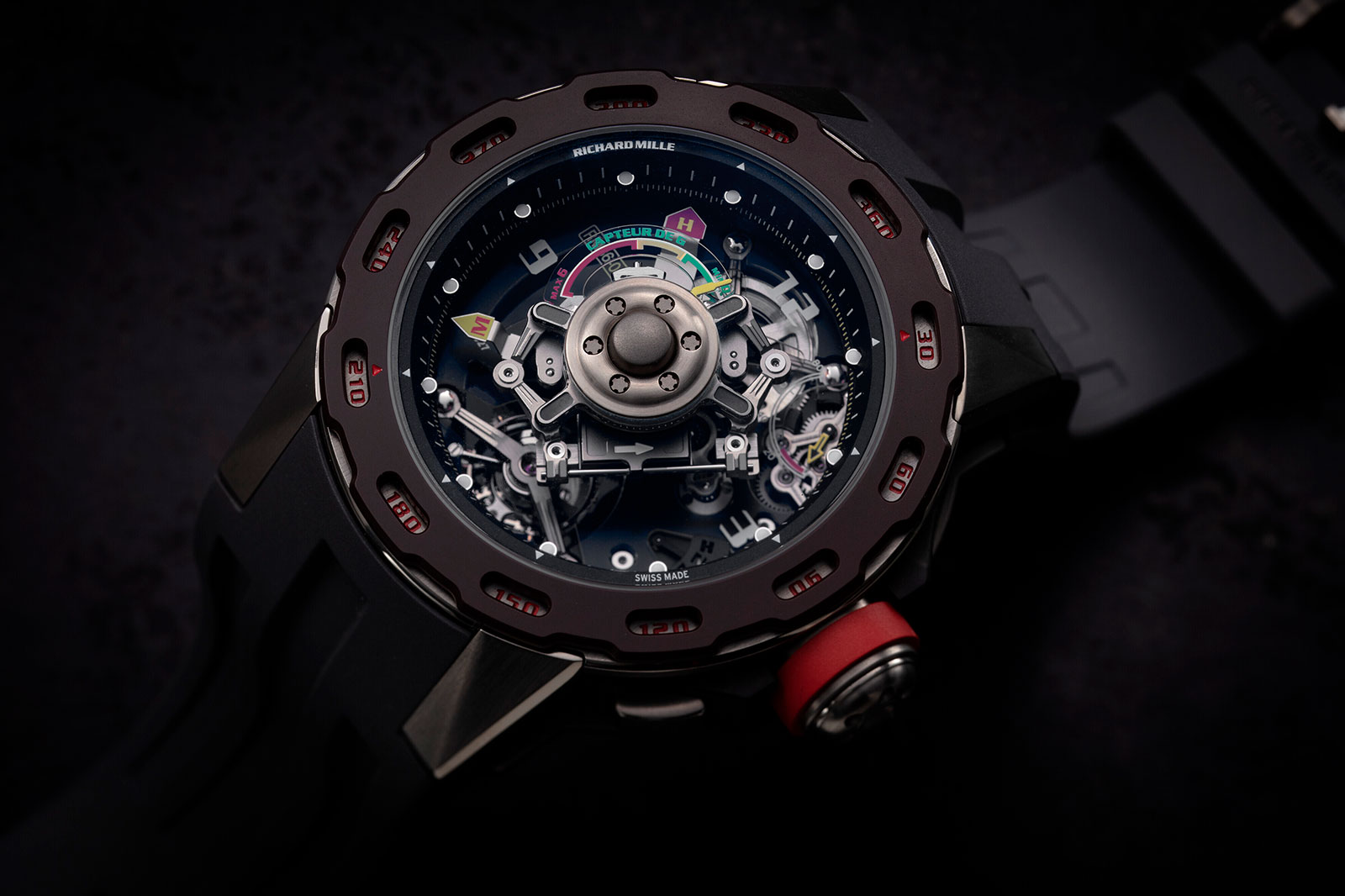
But more notable is the G-force sensor on the front, explaining the complex device situated over the dial. Measuring over 10 mm high on its own, the sensor can be rotated thus “enabling drivers to view lateral deceleration as well as longitudinal forces” according to Richard Mille. Capable of measuring up to 6 g, the sensor works by measuring the pressure on the crystal and bezel, which is then displayed along a clear sapphire scale via a yellow pointer.
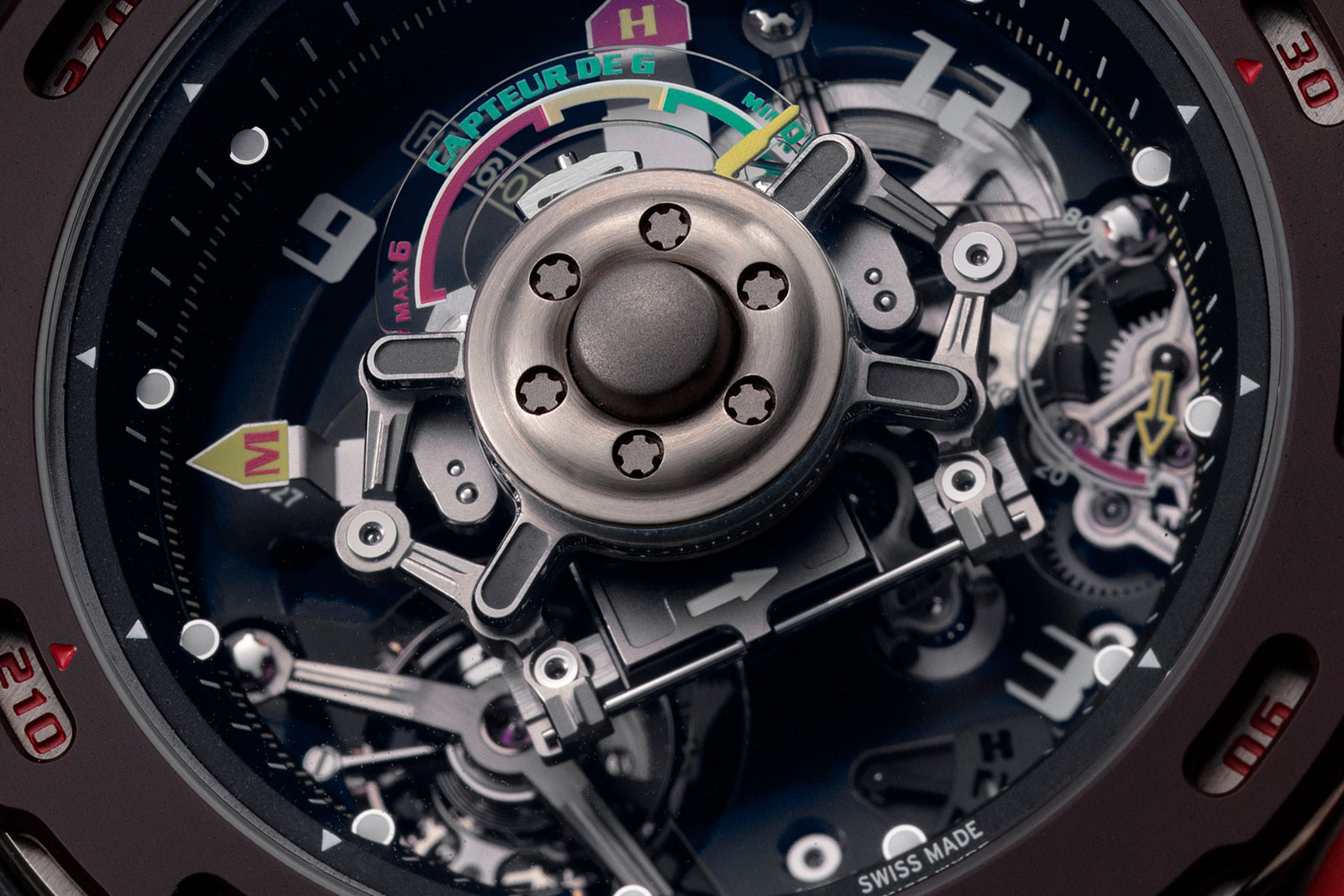
Below the G-force sensor is a conventional Richard Mille tourbillon movement produced by Renaud & Papi. It’s a manual-wind calibre with a one-minute tourbillon and the familiar function selector that allows the wearer to toggle between winding (W), neutral (N) and time setting (H) modes by pressing a button on the case band.
The RM36-01 retains its original warranty and other documents. It carries an estimate of US$350,000-550,000. Full lot details here.
Lot 30: Longines ref. 5824 oversized flyback chronograph
Longines is especially famous for its vintage chronographs, particularly those powered by the cals. 13ZN and 30CH. But one of its most distinctive historical chronographs is the strikingly oversized ref. 5824, a mono-pusher flyback chronograph produced in the 1950s that is best known for having been supplied to the Israeli and Japanese air forces. Measuring about 47 mm in diameter, the ref. 5824 was one of the largest wristwatches ever made by Longines.
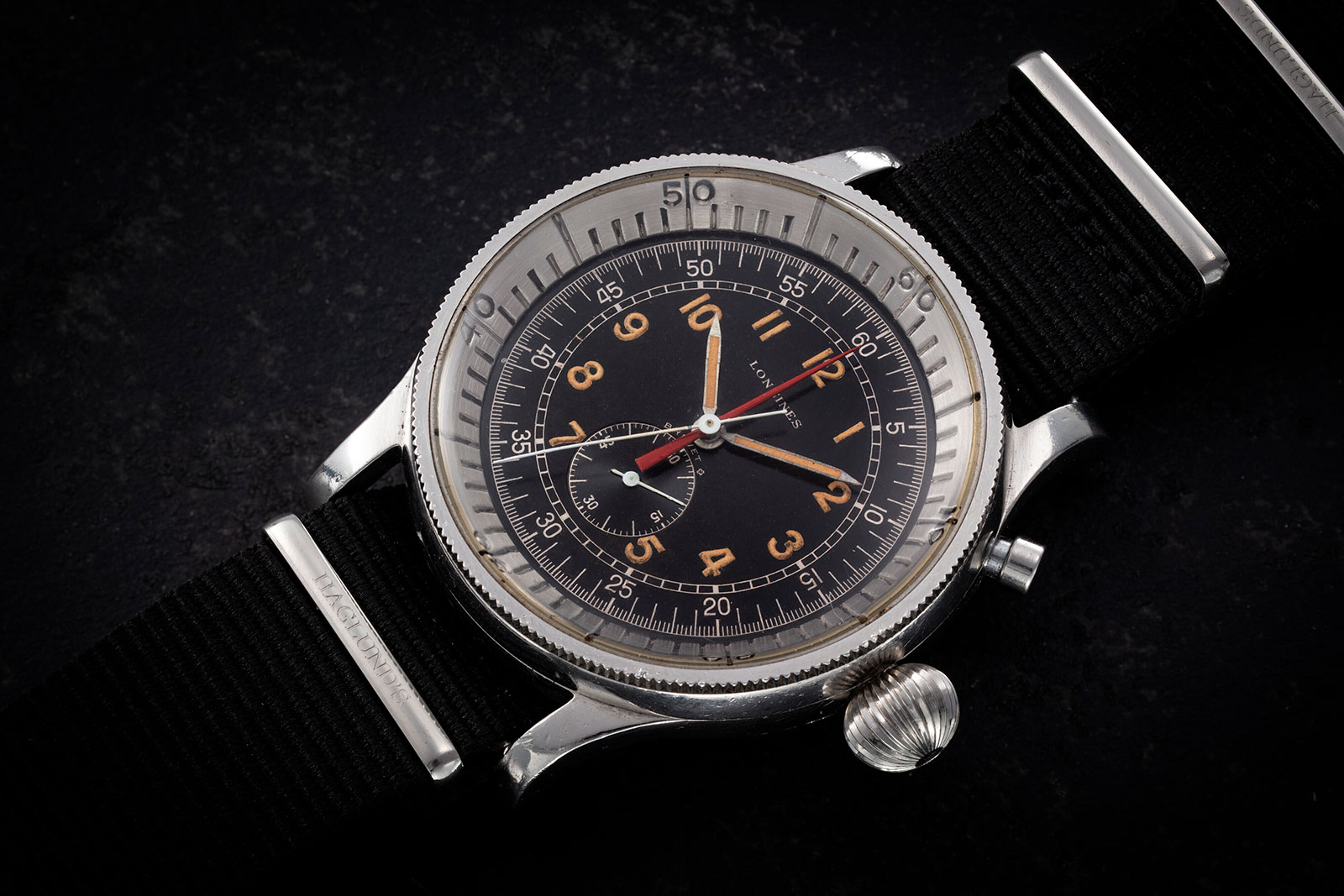
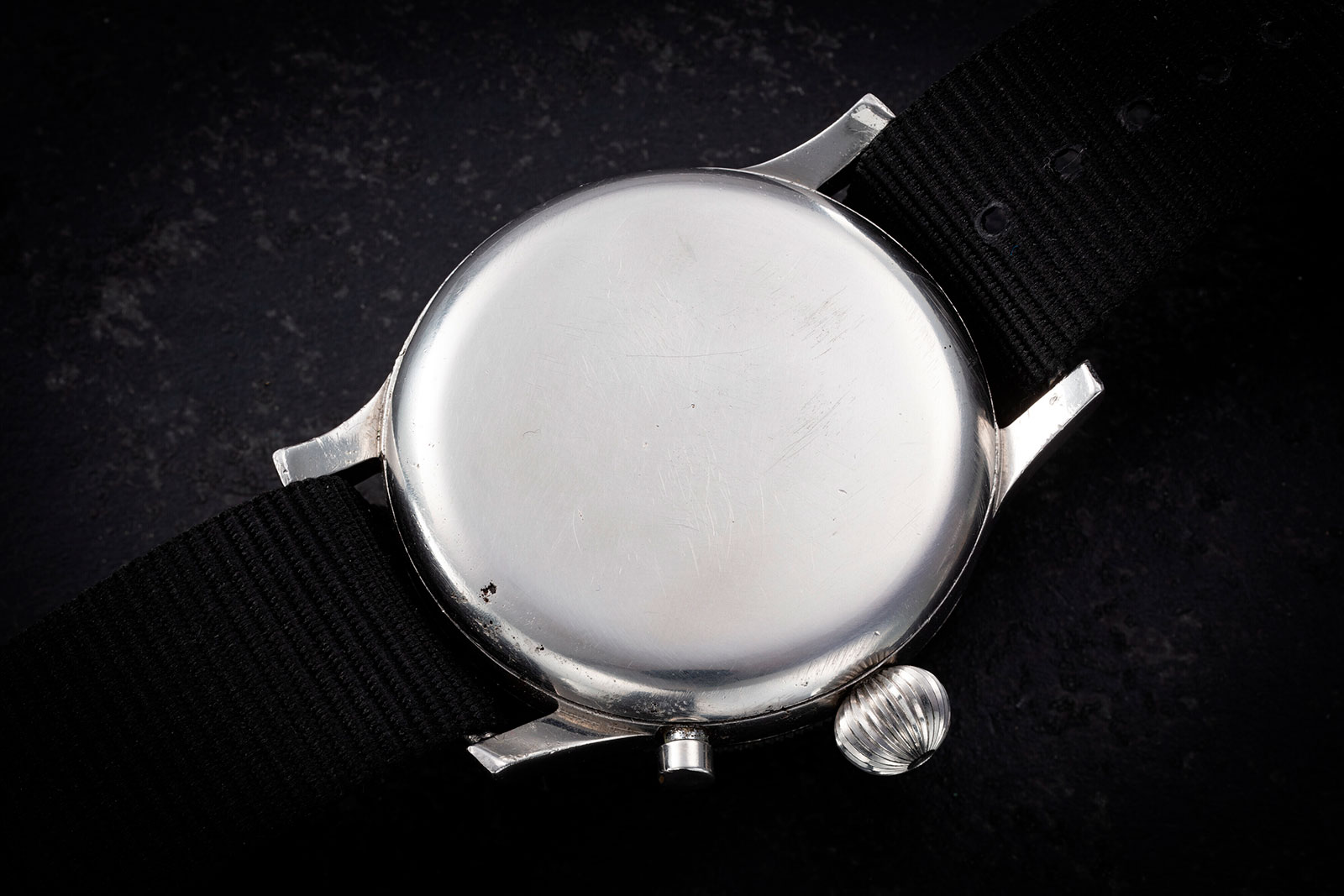
This example bears no military markings, which means it was probably solid to a civilian aviator. But it possesses the distinctive, highly functional aesthetic of the model, including the no-fuss black dial with a central chronograph read against oversized scales on the periphery of the dial and bezel.
This watch is accompanied by a Longines archive extract indicating it was sold in 1951 to the brand’s agent in Israel. It carries an estimate of US$30,000-50,000. Find out more in the catalogue.
Lot 57: Parmigiani Tonda PF Split-Seconds Chronograph
Parmigiani has enjoyed a renaissance since its debuted the Tonda PF in 2021. An elegant sports watch with an integrated bracelet, the Tonda PF was a perfect watch for the times. Perhaps the most impressive model in the line-up – in both technical and physical terms – is the Tonda PF Split-Seconds Chronograph in platinum.
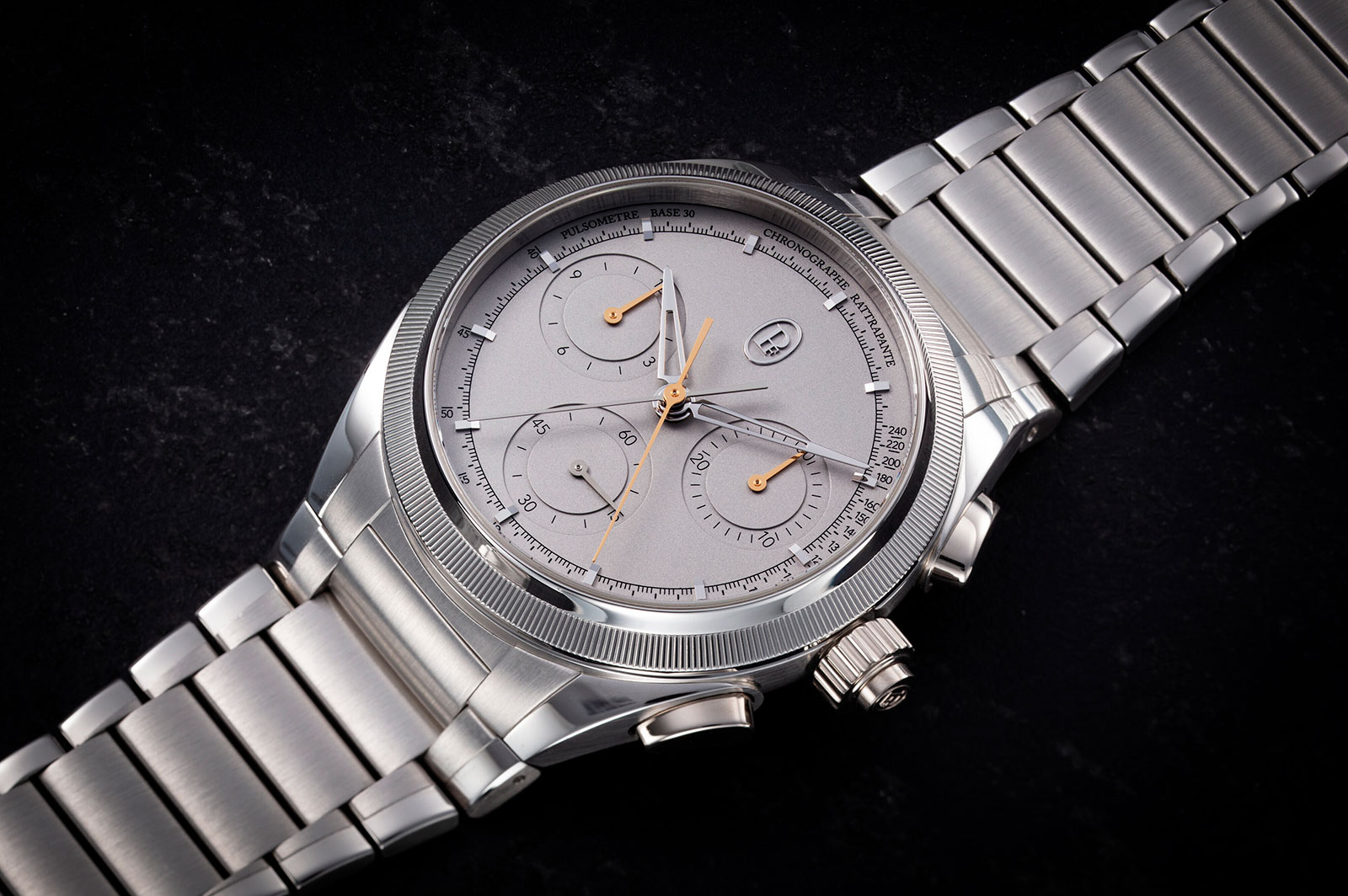
While identical in size to the standard Tonda PF in steel, the split-seconds chronograph is entirely in platinum, giving it a reassuring heft – even the dial is platinum.
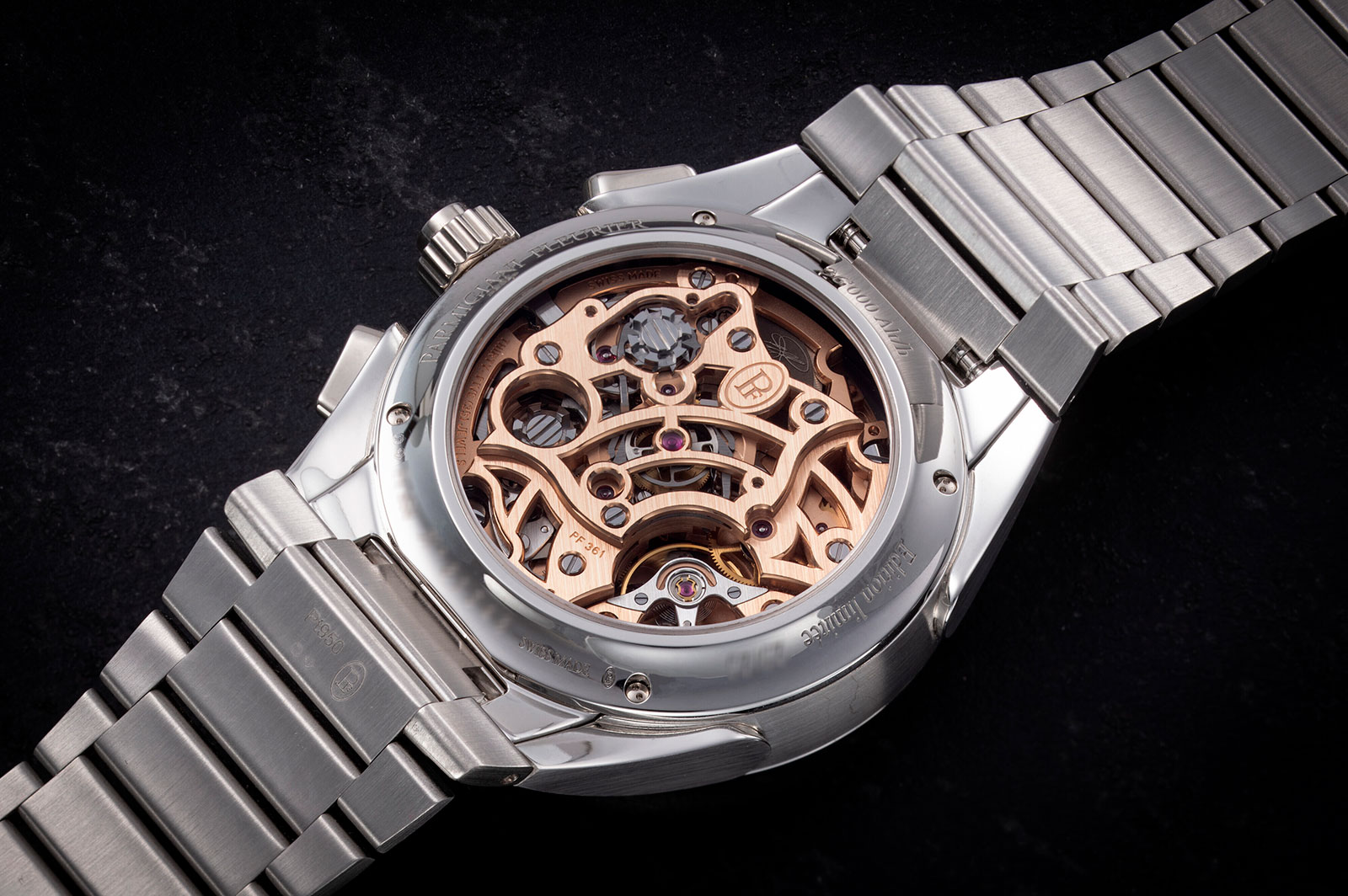
But perhaps more significant is PF361, Parmigiani’s top-of-the-line chronograph movement with an integrated construction (in contrast to its entry-level chronographs that rely on modular movements). It’s a manually-wound movement with a traditional construction for the chronograph, as well as the base plate and bridges in solid, 18k red gold, which have been open-worked to reveal the chronograph mechanism.
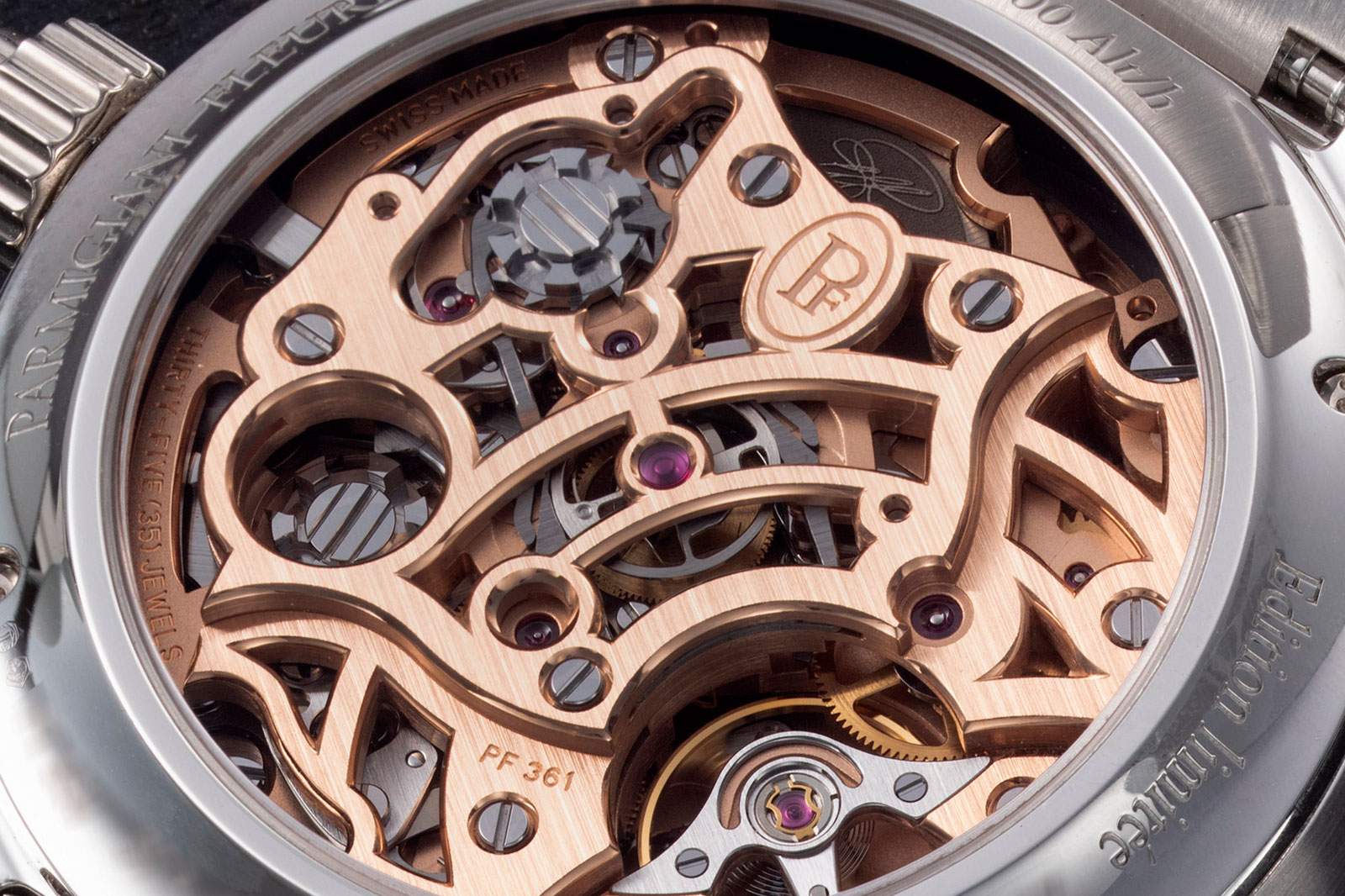
This example is one of only 25 pieces made and offered in a like-new condition with all of the original packaging and accessories. It carries an estimate of US$120,000-220,000. Full lot details here.
Lot 72: Gérald Genta Octo Mosaic GMT Perpetual Calendar
One of the most interesting watches created by Gerald Genta in the 2000s was the Octo Mosaic GMT Perpetual Calendar. Introduced in 2007 as a 100-piece limited edition for Middle East, the watch is a tribute to the culture of the region.
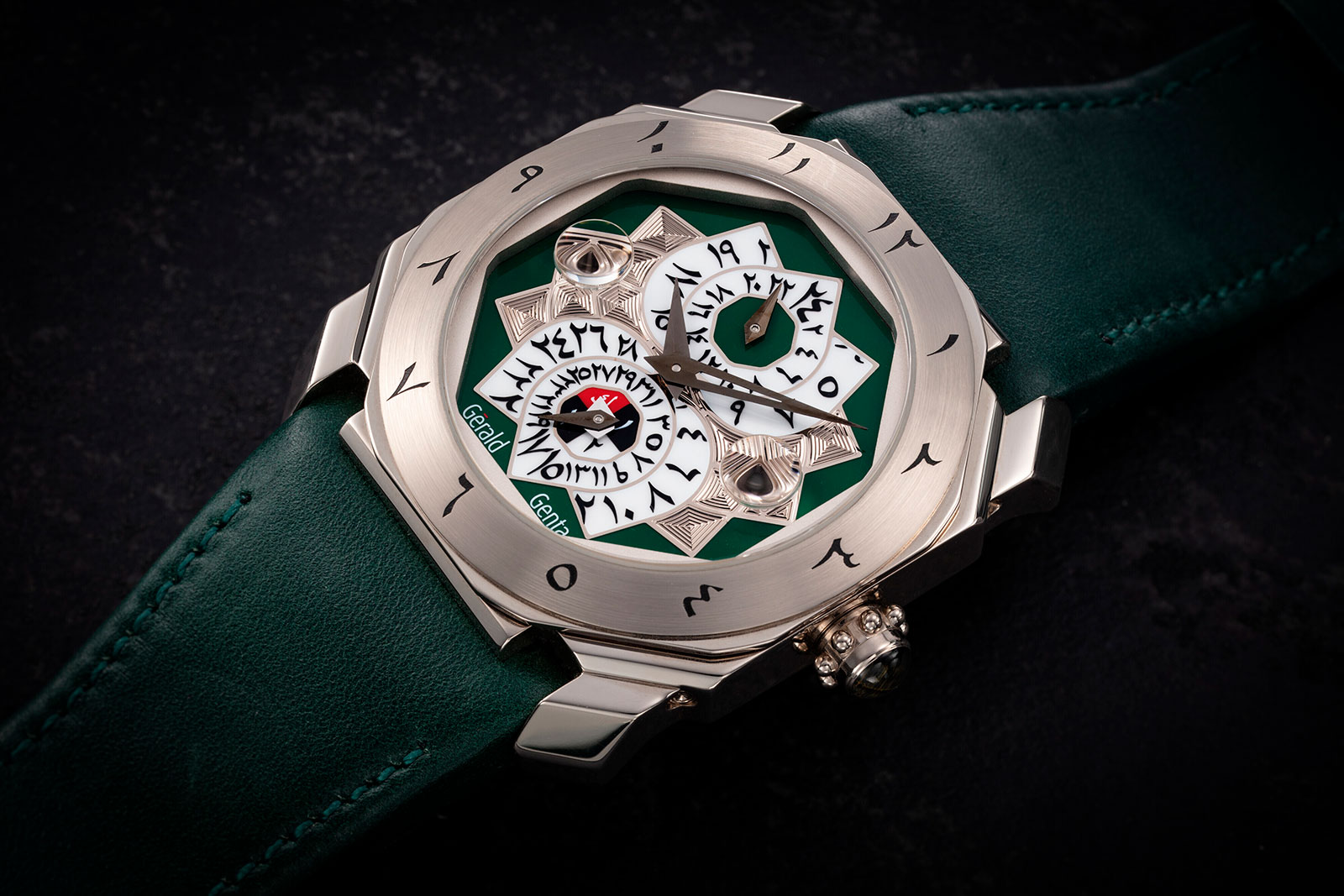
The dial design incorporates the geometric latticework patterns found in Islamic architecture. And naturally all of the markings on the dial are in Eastern-Arabic script, which is used for both time zone displays as well as the perpetual calendar.
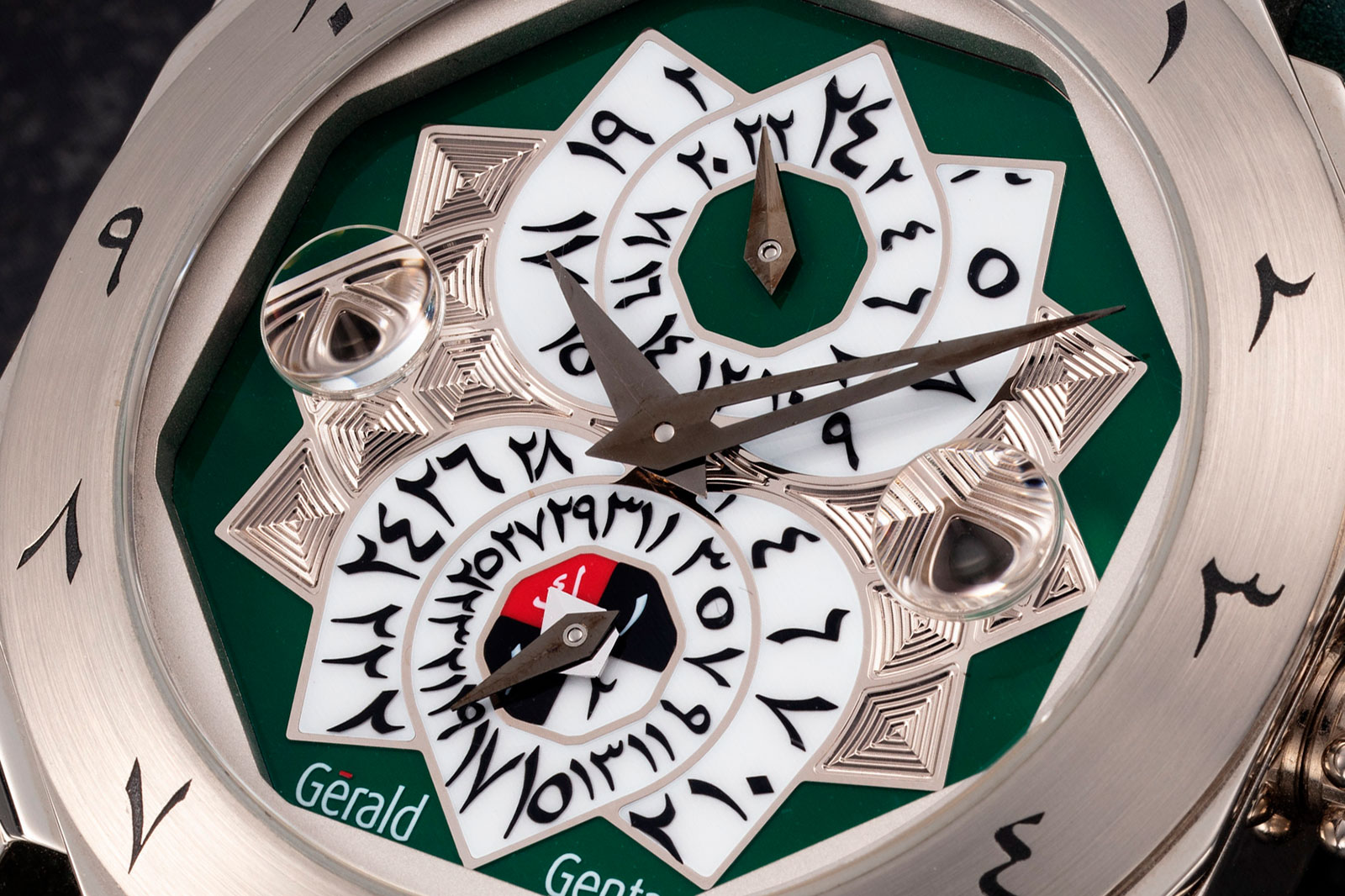
The Octo Mosaic has a large, 44.5 mm case in 18k white gold that contains a Girard-Perregaux cal. 3100 base movement finished entirely in gilt and perlage, the signature decoration of Gerald Genta at the time.
This watch is accompanied by its original box, papers and accessories. It has an estimate of US$20,000-40,000. Full lot details here.
Lot 73: Patek Philippe Golden Ellipse lighter ref. 9512-1 and cufflinks “Sultanate of Oman”
During the second half of the 20th century, Patek Philippe often produced jewellery and accessories, with one of the most intriguing items being the Golden Ellipse lighter. Having the same form as the Golden Ellipse wristwatch, the lighters were solid gold and finished by hand, much like a wristwatch.
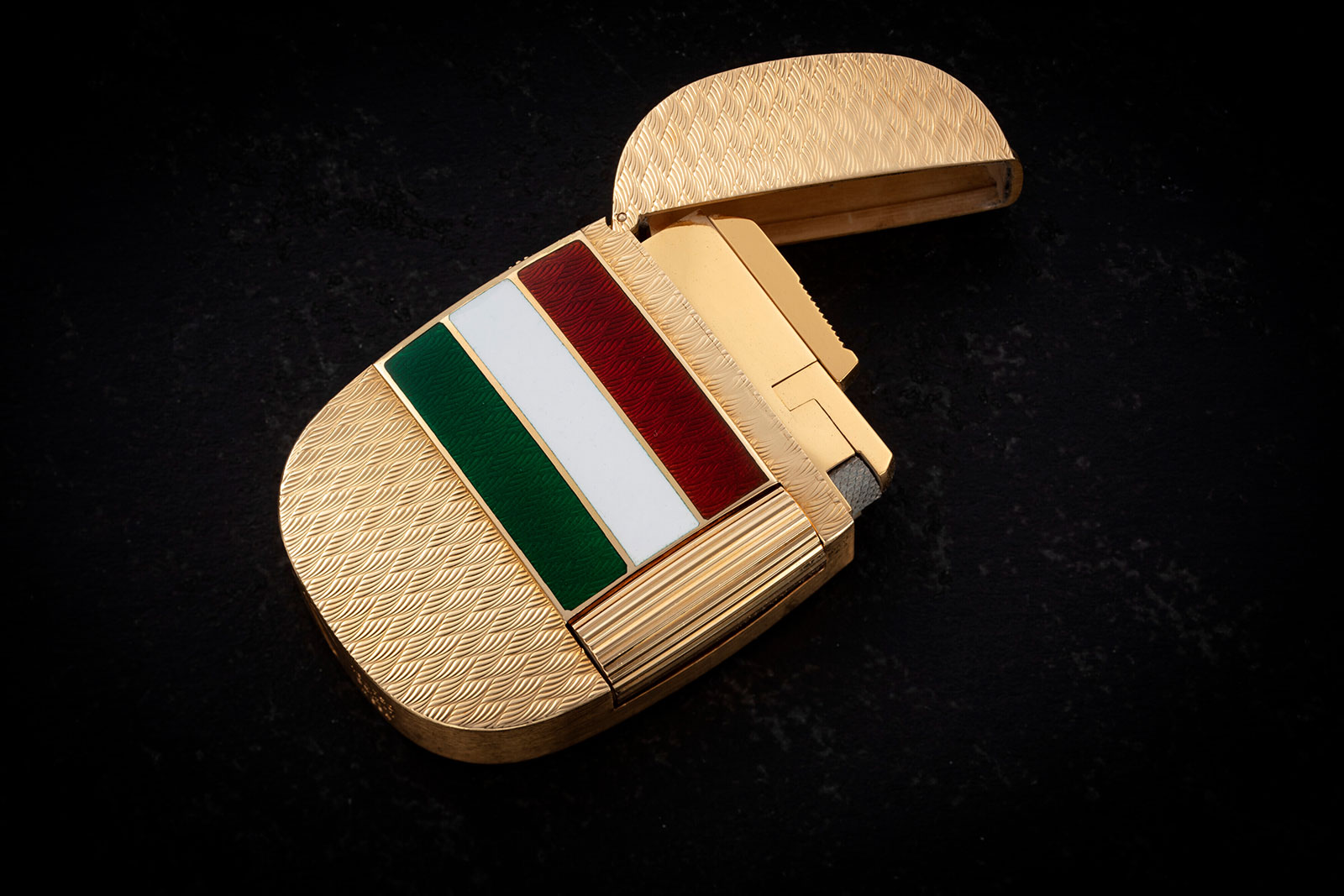
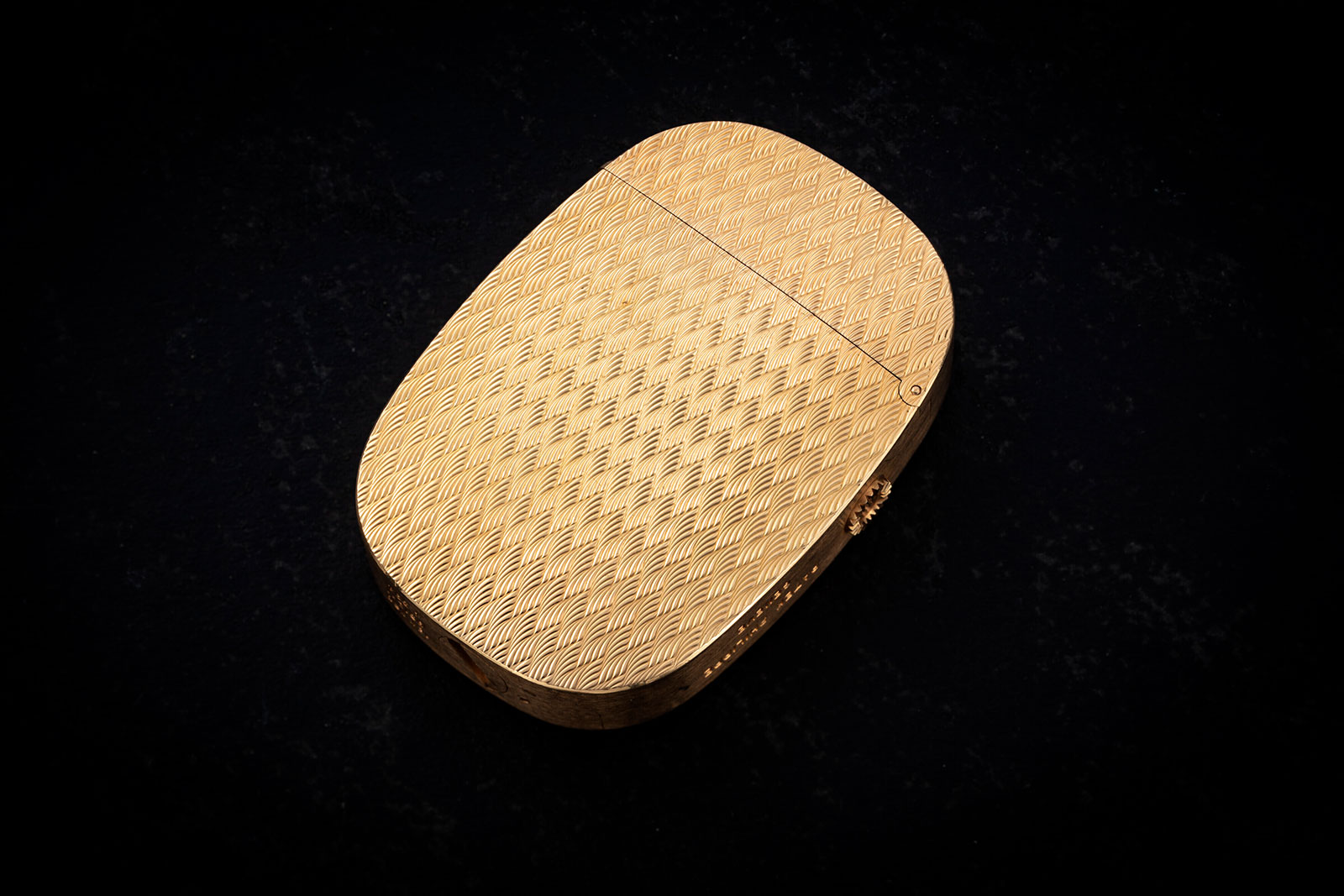
This example is amongst the rarest of Golden Ellipse lighters, the ref. 9512-1 made for the Sultanate of Oman. Finished with traditional guilloche as well as an enamelled representation of the Omani flag, the lighter also bears an engraved Omani state emblem on its side.
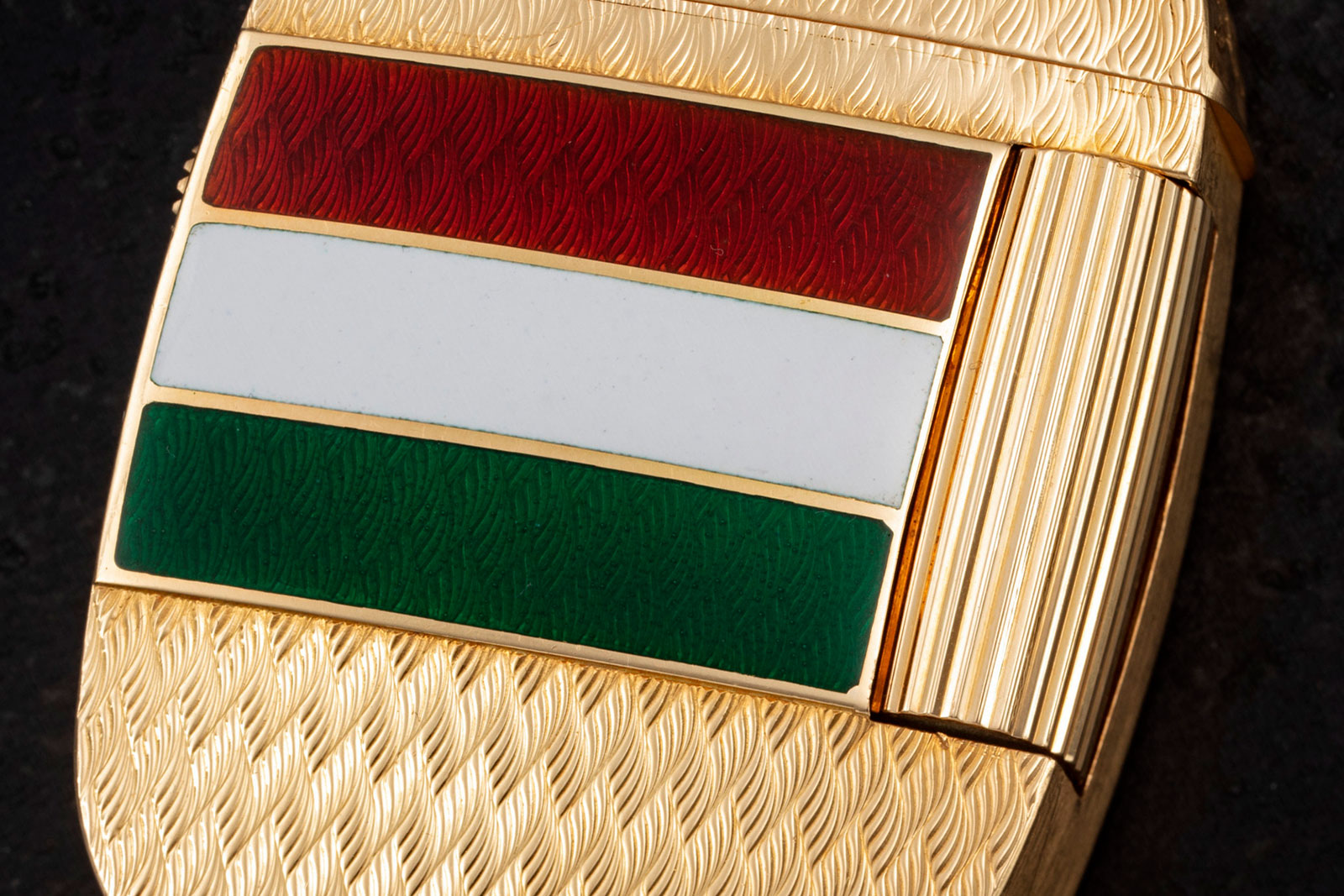
Importantly, this lighter is accompanied by a pair of matching 18k gold cufflinks similarly engraved and enamelled, which are now rarely found intact with the lighters.
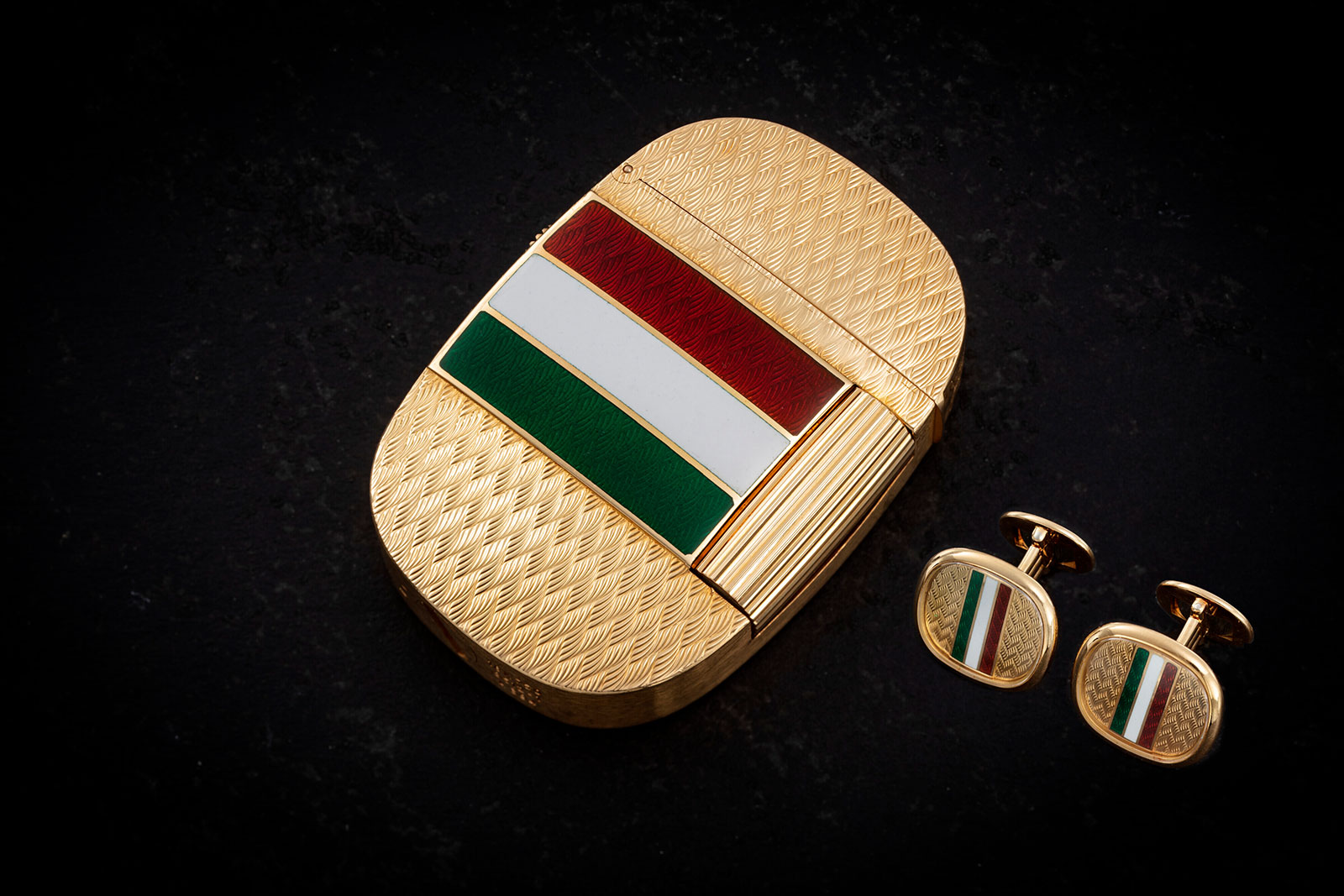
Gentleman’s sets like this, usually comprised of a lighter, cufflinks, and a pen, are popular gifts in the Middle East. According to Christie’s, the current owner’s father received this set from Sultan Qaboos bin Said (1940-2020), the Omani monarch who was famed for his watch collection.
This set has an estimate of US$35,000-50,000. For comparison, a similar lighter without the cufflinks sold for US$75,000 in 2021 at Christie’s. Full lot details here.
Lot 102: MCT Sequential One
A short-lived but nonetheless interesting brand, MCT’s signature complication was the innovative time display found in the Sequential One. Contained in a square case that is the perfect canvas for the complication, the Sequential One was one of the most intriguing complications of the boom in independent watchmaking in the late 2000s.
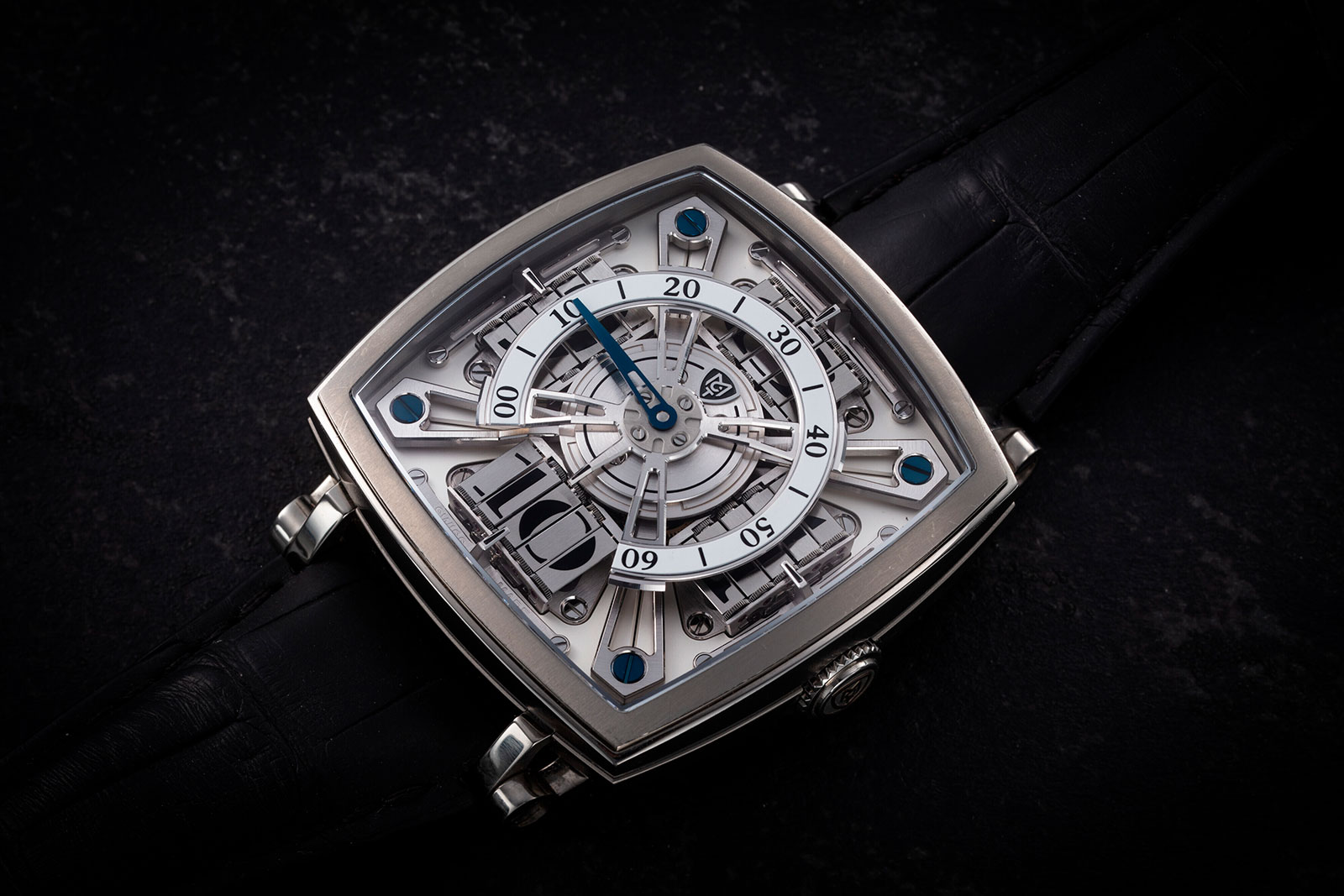
Developed by Denis Giguet, a talented constructor who is now head of development and production at Tiffany & Co.’s watch division, the unique time display is comprised of a jumping minute track along with hours on four sets of shutters. At the top of each hour, the C-shaped minute track would jump to reveal one set of shutters that showed the current hour.
Although it only shows hours and minutes, the time display is complex enough that the hand-wind movement within is made up of some 500 components – more than a conventional chronograph with perpetual calendar.
Visible though the open back is the MCT-S1, a movement clearly developed specifically for the Sequential One, as evidenced by its square form.
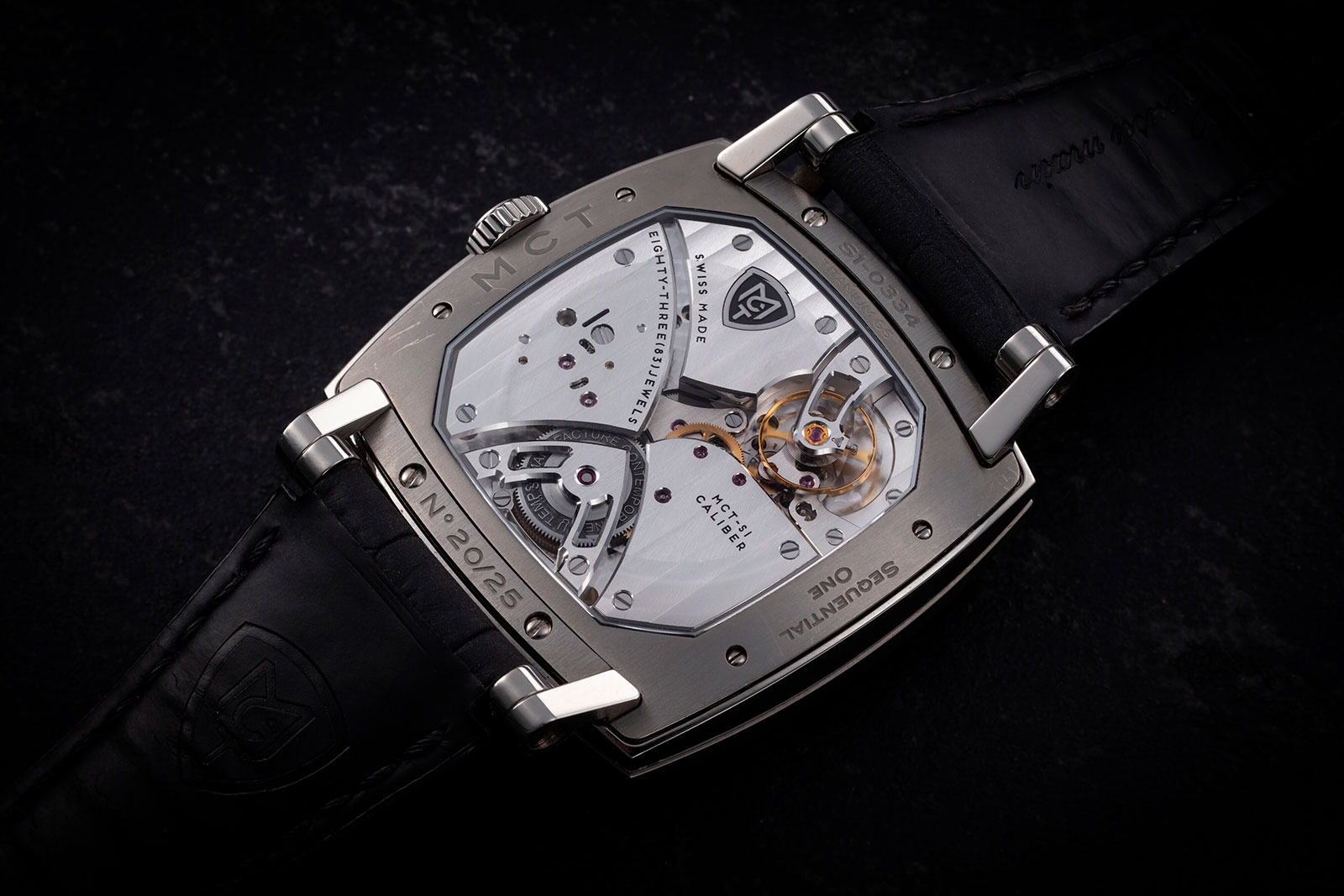
Accompanied only by its original box, the Sequential One has an estimated of US$20,000-40,000.
More details can be found in the catalogue.
Lot 118: Grand Seiko Spring Drive 8-Day Power Reserve ref. SBGD202
Perhaps the flagship Grand Seiko model, the Spring Drive 8-Day Power Reserve is produced with artisanal techniques at the Micro Artist Studio, the workshop responsible for the Credor Eichi II.
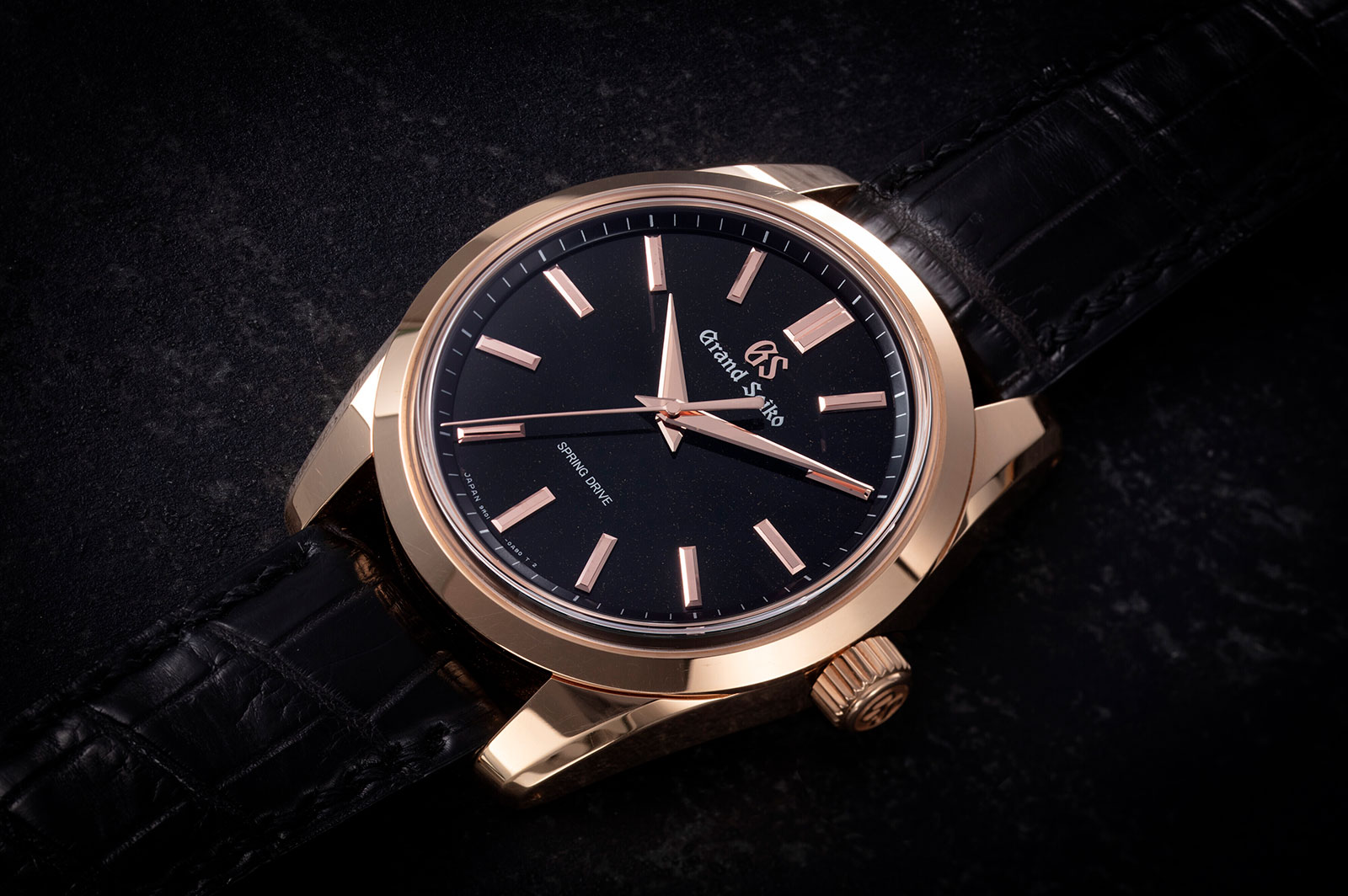
Finished by hand like the Eichi, the cal. 9R01 of Spring Drive 8-Days sports mirrored, rounded bevelling on its full bridge, along with polished countersinks for the many jewels and screws. It is equipped with three large mainsprings, explaining the extra-thick bridge visible through the open back. Made of German silver, the full bridge is modelled on the mountain peaks that surround the Seiko Epson factory where the Micro Artist Studio is located.
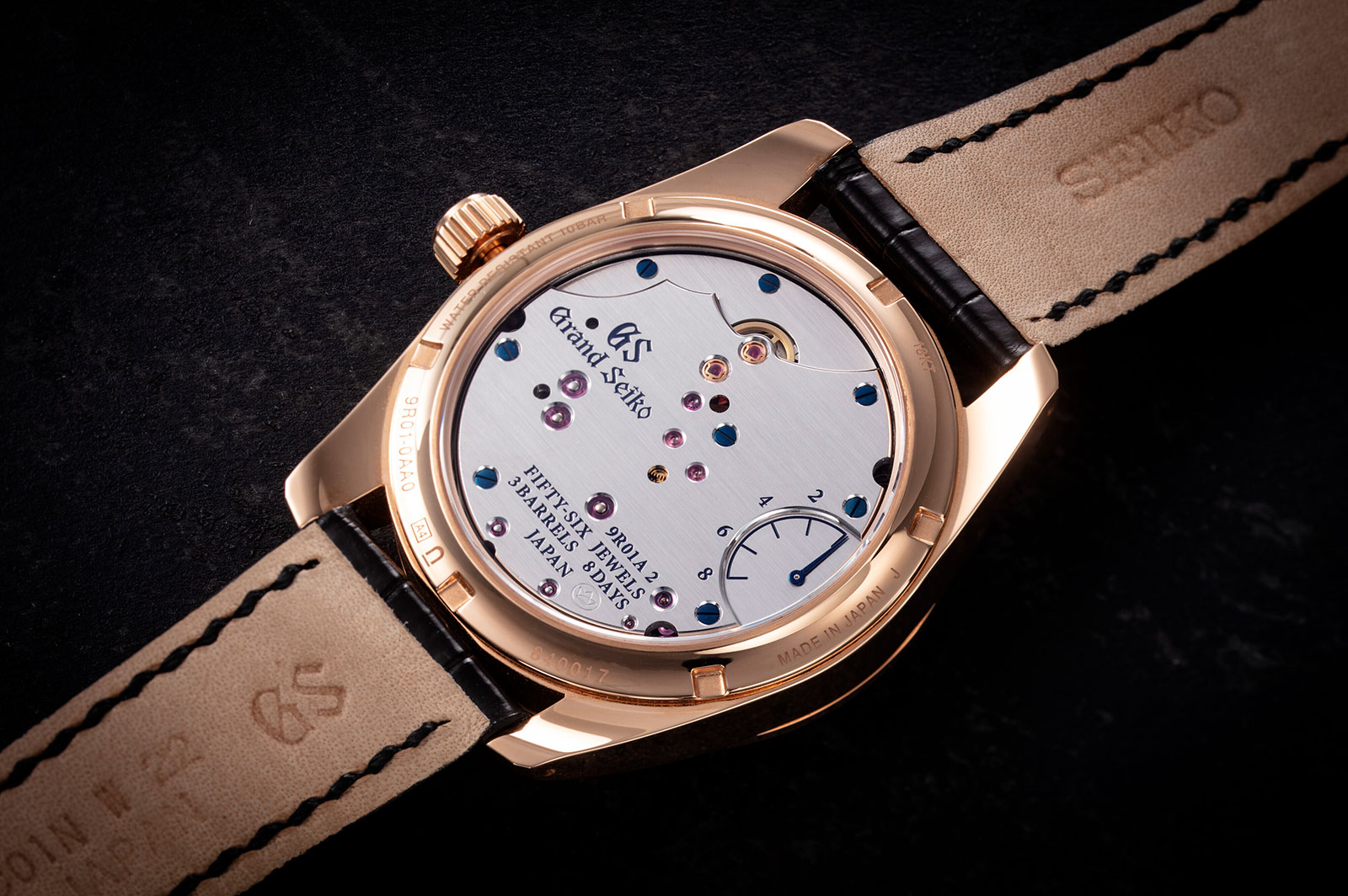
This example is the ref. SBGD202 that combines an 18k rose gold case with a black dial featuring a subtly sparkly finish. First plated, then lacquered in several layers, and finally sprinkled with gold flakes, the dial is meant to evoke the night sky.
The Spring Drive 8-Days is delivered with with its original box, packaging, and accessories. It has an estimate of US$30,000-50,000. For more, check out the catalogue.
Auction information
The auction opens for bidding on April 24 at 12:00 pm (GMT+4), and closes on May 4 at 4:00 pm (GMT+4).
During the course of the online auction, all lots will be on show in Dubai at an exhibition taking place in DIFC. The exhibition is open daily from April 25 to May 4.
Gate Village, Building 5, Podium Level
Dubai International Financial Centre
Dubai
Dates and times are local to Dubai (GMT+4)
For the full catalogue, as well as the online bidding, visit Christies.com.
This was brought to you in collaboration with Christie’s.
Back to top.
